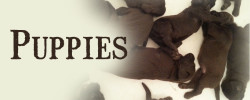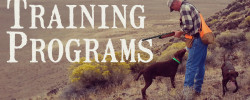Story & Photos by Scott Haugen
Jess Spradley of Cabin Creek Gun Dogs in Lakeview, Ore., (cabincreekgundogs.com) is one of the most respected trainers and field trial specialists in the country. He’s been around dogs his whole life and built his field trial reputation working with German Shorthaired Pointers. A decade ago he had the opportunity to start working with pudelpointers.
“I did a lot of looking at versatile gun dog breeds and chose pudelpointers due to their versatility,” begins Spradley. “As a dog trainer, working with a breed that naturally hunts upland birds, waterfowl, shed antlers, squirrels, and more, made my choice of the versatile pudelpointer pretty easy. And we owe these qualities to the breeders before us who set high, stringent, standards and stuck with it. When I got into it, the pudelpointer breed was well-handled and hunters could get great dogs, but today, as more people are breeding litters to sell at high volume, the quality of dogs has become watered down, so potential owners need to do their homework.”
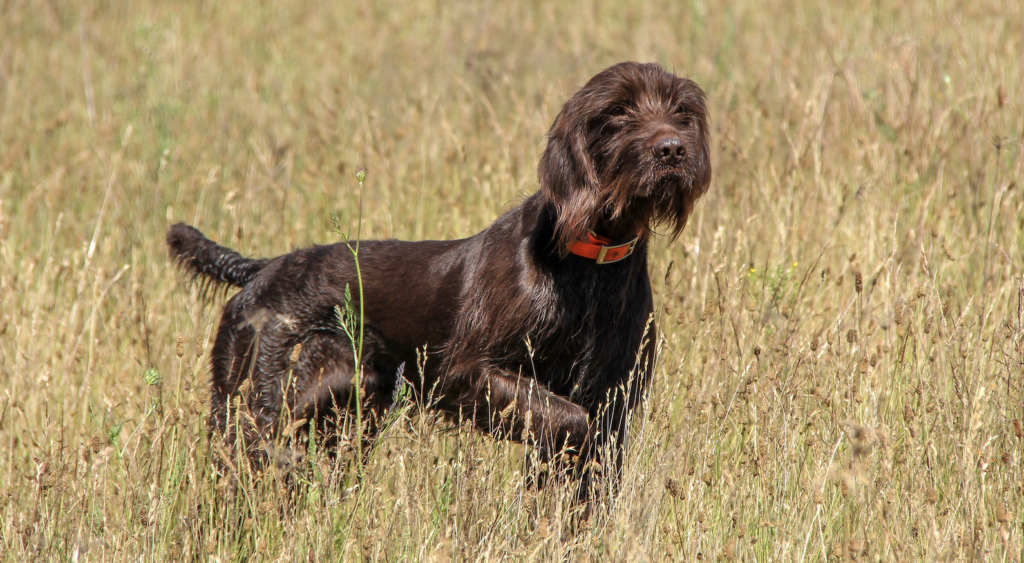
In the late 1800s Germany aggressively promoted hunting within their country. The development of dogs to be used in hunting was also encouraged, and this is when pudels–the German spelling of poodle–widely known as water dogs, were becoming extremely popular. The water dogs varied in coat color and length, but they all had long hair, usually curly, and worked diligently in water and cold conditions, largely as herding dogs. These water dogs were known for their drive and intelligence.
During this time in history, English pointers were very popular throughout much of Europe, which added to the interest of a new possible breed. English pointers were known for their speed and drive to work hard in the field. Breeders of the time crossed various water dogs with prized English pointers. Eventually, desired hair types and behaviors were achieved and ultimately, the versatile pudelpointer gun dogs were born.
In the 1890s pudelpointers became a registered breed, meaning pudelpointers could be bred with other pudelpointers. The goal of early lovers of pudelpointers was to produce a rough-coated dog with a wide range of hunting abilities to be utilized in an array of habitats and conditions for multiple species of birds and small game.
Sigbot “Bodo” Winterhelt is credited with bringing the pudelpointer breed from Germany to North America in the 1950s. Winterhelt, one of the NAVHDA founders, eventually settled in Oregon. Oregon has a very active, dedicated group of pudelpointer breeders, owners, and hunters who are afield with this versatile gun dog breed, year-round.
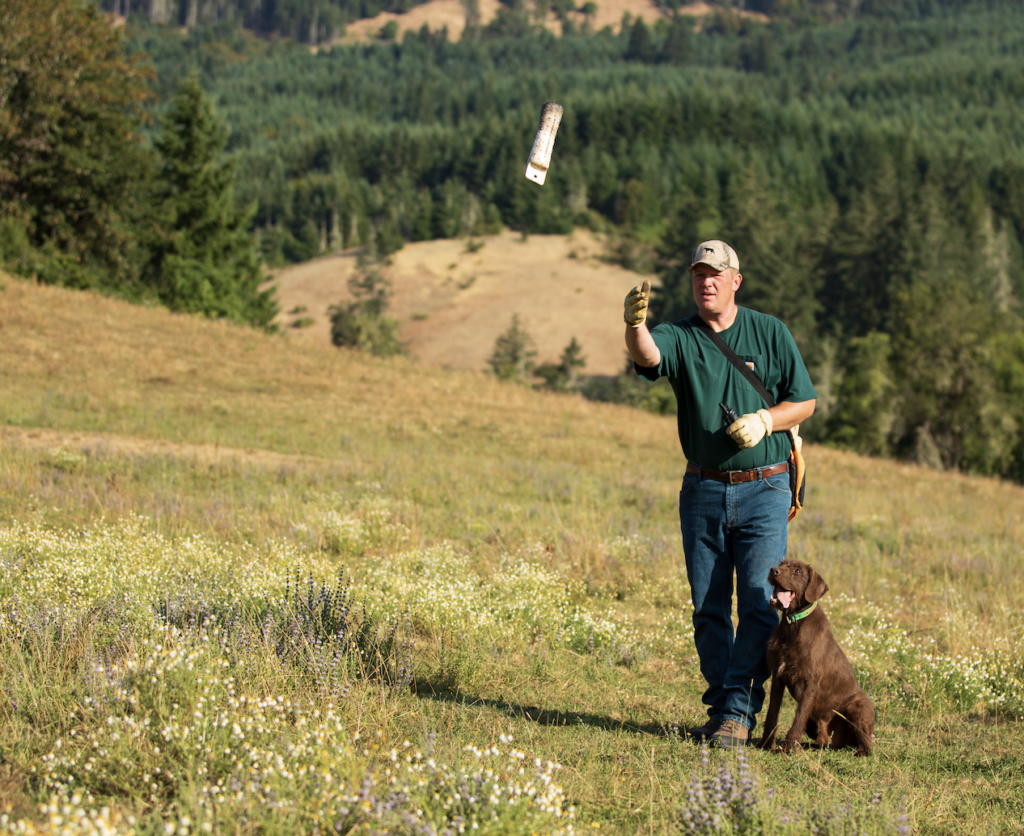
“Pudelpointers are very intelligent to train,” continues Spradley. “They retain information for a long time and there’s often little need to reteach them, even the following season, like you would other breeds. Pudelpointers are also a great first time dog for people because they’re easy to handle and their disposition is second to none. Pudelpointers have a great personality and have an off switch, and they know when to use it. Pudelpointers are fantastic around children, yet have a tenacious drive in the field.”
I own two pudelpointers, both coming from Spradley’s bloodline, and all he says about them is true. I quickly learned with my dogs–and other pudelpointers I’ve worked with–that they’re a sensitive breed. “Pudelpointers don’t do well with a heavy hand,” notes Spradley. “I can steer most of the training with verbal commands and eye contact, versus having to use an e-collar. These dogs know, quickly, if you’re disappointed in them and they’ll try their hardest to please you.”
Hunters who’ve owned Cabin Creek Gun Dog pups will wait years for the perfect pup on their second go-around. “Starting out, my goal was to finish with pudelpointers that were better than what I started with,” concludes Spradley. “I wanted to improve the breed any way I could and I have tried doing this by importing high-end bloodlines and infusing those into the best U.S. bloodlines I could find.” Spradley’s plan worked, but with such high standards, he’s only breeding one to three litters a year and many new dog owners don’t want to wait that long for a pup, understandably.
While Spradley has been rigorously importing, training and testing versatile pudelpointers at the highest level, then tediously trying to breed them, many other pudelpointer breeders in North America–including lots of new ones–have been producing more litters and selling them for much less. Even after months of training, if a dog doesn’t fit Spradley’s standards, he’ll sell it to a hunter and not breed it, which sets him back further. For Spradley, it was never a race to mass produce and sell lots of pups. He wants quality pudelpointers that seasoned hunters will truly appreciate.
If you’re not in a rush and looking for an extremely high quality bloodline of pudelpointers, then Spradley is your man. But get on his waiting list, now. If you’re wanting one of these lovable, high-performing dogs sooner rather than later, carefully research the bloodline you’re considering. As with any hunting dog breed, quality bloodlines are vital to a healthy dog that’s designed to hunt and behave at an optimal level. Once you see how hard pudelpointers hunt, how intelligent they are, and the level they’ll reach to please you, you’ll likely be planning on getting another one sooner rather than later.
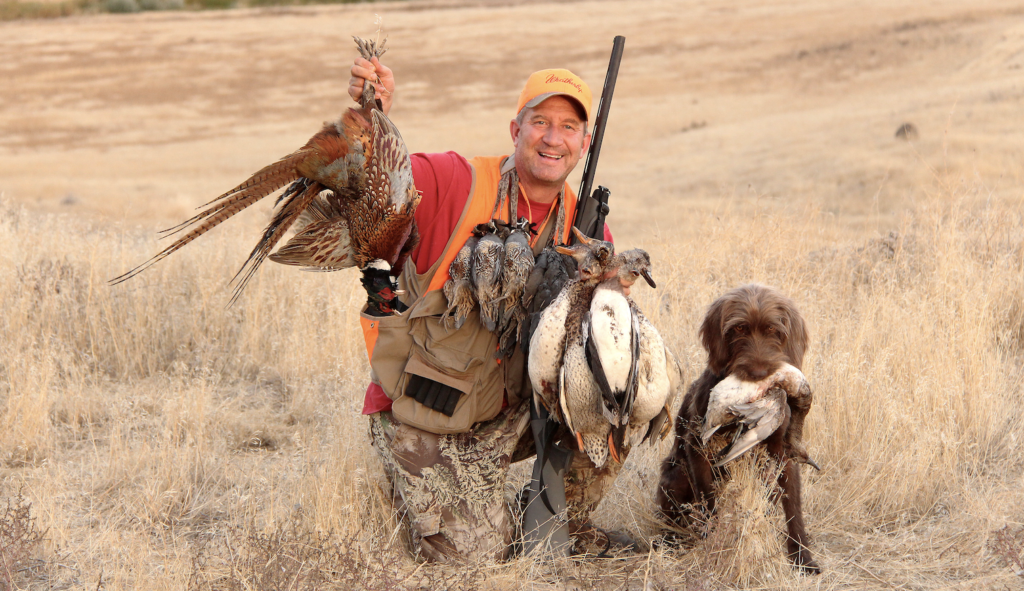
*Note: This story originally ran in the June 2023 issues of NW Sportsman and CA Sportsman magazines.

